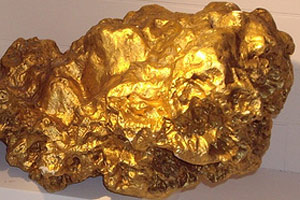Ahead of coal mining, hazardous waste treatment, electric utilities, and manufacturing, the EPA ranked the metal mining industry as the nation’s worst toxic polluter in 2004, when it disposed of 1.07 billion pounds of chemical waste. No wonder big mining states—the largest are Arizona, Nevada, Montana, and New Mexico—face a litany of environmental hazards linked to waste disposal and other mining practices, from poor air and water quality to high levels of lead and arsenic in people’s homes.
Though the mines ostensibly bring the states both revenue and jobs, often, when a mine closes—which they often do before changing hands from one company, which frequently files for bankruptcy, to another—states are left with mammoth environmental and fiscal tabs.
In 2000, in an effort to counter this practice, the Clinton administration put into effect a new rule strengthening a requirement that companies take out a bond for the estimated cost of cleaning up after closure, guaranteeing the state and its taxpayers the money needed to clean up a site in cases where a mining company abandoned its cleanup responsibilities. Unfortunately, the rule change was overturned by the incoming Bush administration’s Secretary of Interior, Gale Norton, and replaced with weaker regulations. On the bright side, state bonding regulations can supersede federal rules if they are stronger; but here, too, there are problems: state agencies, heavily influenced by the mining industry, routinely underestimate cleanup costs. And assurance companies, looking at the spate of recent bankruptcies, have raised interest rates, creating yet another financial shortfall by making it more expensive for mine companies to buy coverage.
It’s estimated that the taxpayers in the 11 most important mining states would wind up paying more than $12 billion in cleanup costs if all companies file bankruptcy or refuse to clean up their sites, leaving the states to come up with the funds due to the shortfall in the financial assurance of companies at 150 mines. Arizona, a state with some of the biggest offenders, faces a maximum cost of almost $4 billion, second only to Nevada, whose maximum liability for their industry is $4.5 billion—which would be paid, of course, by the taxpayer.
Below is a look at ten of the nation’s costliest offenders.
Top 10 Mine Taxpayer Liabilities in the U.S. by State, Putting a Price on Pollution, Jim
Kuipers, March 2003, Center for Science in Public Participation.
|
Rank |
Mine |
State |
Ownership |
Commodity |
Estimated Cost to Taxpayers |
Years of Operation |
Revenue of Mining Operator(FY05) |
|
1 |
Bingham Canyon |
UT |
Rio Tinto/Kennecott |
Copper |
1,316.8 M |
1903-present |
$5.2 B |
|
2 |
Morenci |
AZ |
Phelps Dodge |
Copper |
934.1 M |
1872-present |
$8.3 B |
|
3 |
Twin Creeks |
NV |
Newmont Gold |
Gold, Silver |
636.8 M |
|
$4.4 B |
|
4 |
Chino |
NM |
Phelps Dodge |
Copper |
400.0 M |
1801-present |
$8.3 B |
|
5 |
Ray |
AZ |
ASARCO |
Copper |
457.1 M |
1882-present |
Bankrupt** |
|
6 |
Sierrita |
AZ |
Phelps Dodge |
Copper |
404.0 M |
1957-present |
$8.3 B |
|
7 |
Mission |
AZ |
ASARCO |
Copper |
414.9 M |
1961-present |
Bankrupt** |
|
8 |
Gold Quarry |
NV |
Newmont Gold |
Gold, Silver |
339.2 M |
1985-present |
$4.4 B |
|
9 |
San Manuel |
AZ |
BHP |
Copper |
334.1 M |
1953-2003 Under reclamation |
$4.6 B* |
|
10 |
Tyrone |
NM |
Phelps Dodge |
Copper |
250.0 M |
1969-present |
$8.3 B |
|
Total |
|
|
|
|
$5.5 B |
|
$48.1 B |
*BHP Billiton’s revenue from base
metals (copper, molybdenum, silver, lead and zinc)
**ASARCO is estimated to owe $2 billion
in cleanup costs for its 94 sites in the US
The cost of playing host to the metal mining industry isn’t only financial. The environmental impact of each of these mines will affect the states’ natural resources and populations for decades, and in some cases forever, absent big changes in the way the industry operates. The above mines are guilty of some if not all of the following environmental violations: surface and groundwater contamination due to acid mine drainage; high levels of lead and arsenic in the air; water and in people’s homes; huge amounts of dust from mine tailings (the fine lead and arsenic-laden particulate matter left over from the mining process); large amounts of copper released from open-pit mines (copper dust in high levels is fatal to humans); acidic water leaching into surrounding bodies of water because of spills; acid generation from smelter stacks; the creation of toxic tailings ponds (in order to decrease the tailings dust in the air, many operators pour acidic water on the piles creating a pool that then leaches into the ground); high levels of mercury; and high levels of uranium and tungsten.
For more information, visit:
www.bettermines.org
www.earthworks.org
www.mineralpolicycenter.org
www.nodirtygold.org











